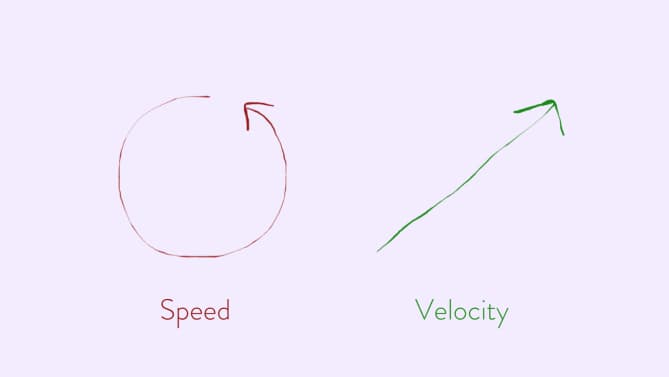Velocity > Speed: The Physics of Peak Productivity
Never mistake speed for progress. Busyness doesn’t guarantee progress. Speed is how fast an object moves; velocity is speed with direction.
So what do speed and velocity have to do with productivity?
“There is more to life than simply increasing its speed.” — Mahatma Gandhi
Most people think speed guarantees better output. They are proud of how busy they are or how much they can do in a single day. They care more about speed than velocity, i.e., direction. They rarely think about where they are headed and whether the speed is helping them make progress. And they don’t measure how much they’ve achieved over a period of time.
Speed alone is not enough to get anywhere.
You need direction. If I’m on the fastest plane but have no direction, the plane’s speed is of no value. Add direction to the speed, and everything changes. Once you acquire a destination, speed becomes relevant. Sometimes speed is a waste of time because it can take twice as much time to recover and focus on the right tasks to gain velocity.
To leverage both speed and velocity, identify the tasks that move the needle and double down your focus.
Define your MITs (most important tasks) before you start your day. Prioritize high-value tasks that can help you achieve your end goal and relentless get rid of unnecessary distractions that have no value to your bigger picture. And most importantly, create work processes that restrict or block distractions. It’s the only way to increase velocity.
More often than not, many people fall for the urgency trap: they focus on getting urgent but unimportant tasks done and neglect important but not necessarily urgent tasks. To get more things done, change speed to velocity. Speed alone can be pointless because you are forced to hurry the process or do more low-value tasks. In the end, you will have nothing to show for the time spent.
Working on a few important things is more important than aiming for speed. When you focus on velocity, you know your direction and priorities. And most importantly, you know what you expect after time spent.
How do we apply speed and velocity in life?
In a world addicted to speed, your only leverage is velocity. If your goal is to read 100 books a year, speed becomes the goal, which ruins the reading experience: you will be forced to speed-read them and miss a lot of relevant and life-changing ideas.
If you focus on becoming skillful, mastering a topic, solving a specific problem or reading for the knowledge you can retain for life, you can combine both speed and velocity.
It’s easy to get caught up in speed mode and lose direction. The only true goal of building a reading habit is to become a better version of yourself.
Whatever you want in life is not a speed contest; learn to be more present, slow down to do more great work, single task to get better work done, read deeply to retain knowledge for life and ditch multitasking to make good progress.
Speed is not necessarily counterproductive. If you have velocity (direction, purpose, and measurable outcome), it can be used as leverage. Where are you headed in life? Find your velocity before you accelerate. When in doubt, hurry slowly.
--
This article originally appeared in Medium and then on Hive — the world's first democratically built productivity platform. Learn more at Hive.com.
What’s your no. 1 piece of productivity advice? Share your answer in the comments to help other Fairygodboss members!
Why women love us:
- Daily articles on career topics
- Jobs at companies dedicated to hiring more women
- Advice and support from an authentic community
- Events that help you level up in your career
- Free membership, always
